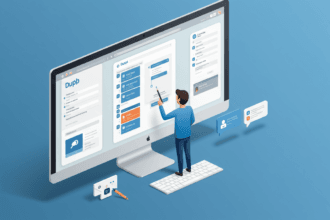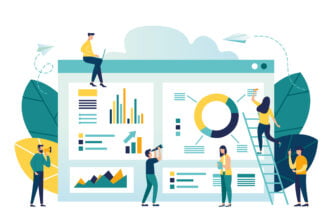Data analysis isn’t something you do for your own entertainment. Businesses pay for analytics to support decision-making, to provide them with information that gives the business the best shot at the biggest profits.
Yet C-level executives frequently ignore or undervalue the analytics available to them.
Why does upper management ignore information that would surely enable them to achieve better and more consistent returns on investment? The information isn’t presented in the right way.
Data analysis isn’t something you do for your own entertainment. Businesses pay for analytics to support decision-making, to provide them with information that gives the business the best shot at the biggest profits.
Yet C-level executives frequently ignore or undervalue the analytics available to them.
Why does upper management ignore information that would surely enable them to achieve better and more consistent returns on investment? The information isn’t presented in the right way.
Let’s make this clear: I’m not suggesting that analysts misrepresent or make factual errors in presentations. No, it’s a matter of style.
Executives like to feel important, confident and above all, powerful. Analysts, believing the facts are the facts and more is better, lay everything on the table and expect executives to see it as they do. The executive, feeling uncomfortable and overwhelmed, often responds by ignoring the presentation entirely.
Got that? The more supporting information you provide up front, the less they care.
Want more power to engage executives with analytics? Then you must speak to them the way they like, the way that makes them feel important, confident and above all, powerful. These are the 4 things you must understand:
1) The only numbers that interest executives are numbers with dollar signs in front.
2) Executives have very short attention spans: get to the point.
3) Beware of details.
4) Strip tease holds attention better than full disclosure.
Here they are in more detail.
1) The only numbers that interest executives are numbers with dollar signs in front.
Don’t say this: The z-score for the test versus control coupon response is 1.27, which is less than the critical value of 1.64, therefore we fail to reject the null hypothesis.
Why not? The executive won’t understand you completely, and won’t feel confident.
How to express the same idea to the executive: We compared our current coupon with a test coupon, and the variations in sales were no more than what we ordinarily experience day-to-day.
2) Executives have very short attention spans: get to the point.
The most effective way to get an executive to make time for you and your message is to assume the executive won’t have time for you. Sound backwards? Having many people competing for time and being free to choose the most interesting and compelling activities makes the executive feel important. Compel the executive to linger with you by offering a compelling message quickly.
Imagine that the executive will have only 60 seconds to spend with you. What would you say? Just the things you care about most, right? And the most compelling reasons to believe you. If you had five minutes, you’d add more information, but still it would be carefully selected. Plan your presentation with this in mind. Open with 60 seconds of the most important and convincing thoughts you have to offer. Then briefly add a little detail. Be prepared to continue in steps. Stop to answer questions. Know your material well and be prepared to change the sequence or to go into more or less detail in response to the executive’s interest.
3) Beware of details.
There are two types of executives: those who have no interest in details, and those who have far too much interest in details. The first type is easily bored; if you provide too much detail, you’ll lose that executive’s interest entirely. The second is easily sidetracked; the executive may take notice of something small and become strongly engaged, just not in the point you are trying to make.
Keep your presentations, and especially your visuals, spare and simple. Focus on the point you are making and the information that supports it.
Don’t volunteer any information that does not support your point. You must, of course, be prepared to answer questions. If you know of information that may come up and appear to contradict your point, you must have counterarguments at the ready.
Do not include distracting details in charts! If you are trying to make a point based on the behavior of 90% of shoppers, don’t display a huge scatterplot that includes 100% of the shoppers on the screen behind you. Yes, you heard me right – I’m telling you not to show data that doesn’t make your point. There no law against putting up a plot of points for just the middle 50% of the data. Label the graph to indicate what you did, but don’t belabor the point. If you can’t bring yourself to do that, then choose another type of graph, one that won’t draw attention to outliers and extremes and distract from your point.
4) Strip tease holds attention better than full disclosure.
Nothing makes an executive feel more powerful than discovery. The executive wants to feel clever, even brilliant. There’s no thrill in witnessing an information dump. Reveal only a little at first and let your executive feel powerful by asking questions and treating the responses as discoveries.
As you plan that layered presentation discussed in step 2, build in opportunities for the executive to ask questions. You have anticipated the questions, created the path that leads to the questions, you have prepared responses to the questions, in fact, you desire these questions, and you know the responses will lead the executive to the conclusion you have in mind. But never ever, reveal your plan.
By having the opportunity to ask questions and having all questions answered, the executive draws conclusions, conclusions that are the executive’s alone. Yes, you know and I know that you will leave no other choice, but that’s our little secret. Let the executive feel important, confident and above all, POWERFUL.







